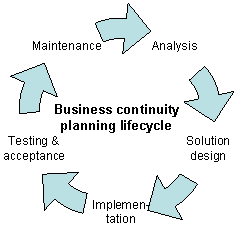Recovery
There is a distinction between data recovery and data intelligibility. One may be able to recover data but not understand it. For data archaeology to be effective, the data must be intelligible. [4]
A term closely related to data archaeology is data lineage. The first step in performing data archaeology is an investigation into their data lineage. Data lineage entails the history of the data, its source and any alterations or transformations they have undergone. Data lineage can be found in the metadata of a dataset, the para data of a dataset or any accompanying identifiers (methodological guides etc). With data archaeology comes methodological transparency which is the level to which the data user can access the data history. The level of methodological transparency available determines not only how much can be recovered, but assists in knowing the data. Data lineage investigation involves what instruments were used, what the selection criteria are, the measurement parameters and the sampling frameworks. [1]
In the socio-political manner, data archaeology involves the analysis of data assemblages to reveal their discursive and material socio-technical elements and apparatuses. This kind of analysis can reveal the politics of the data being analysed and thus that of their producing institution. Archaeology in this sense, refers to the provenance of data. It involves mapping the sites, formats and infrastructures through which data flows and are altered or transformed over time. it has an interest in the life of data, and the politics that shapes the circulation of data. This serves to expose the key actors, practices and praxes at play and their roles. It can be accomplished in two steps. First is, accessing and assessing the technical stack of the data (this refers to the infrastructure and material technologies used to build/gather the data) to understand the physical representation of the data and also. Second, analysing the contextual stack of the data which shapes how the data is constructed, used and analysed. This can be done via a variety of processes, interviews, analysing technical and policy documents and investigating the effect of the data on a community or the institutional, financial, legal and material framing. This can be attained by creating a data assemblage [1]
Data archaeology charts the way data moves across different sites and can sometimes encounter data friction. [5]
Disaster recovery
Data archaeologists can also use data recovery after natural disasters such as fires, floods, earthquakes, or even hurricanes. For example, in 1995 during Hurricane Marilyn the National Media Lab assisted the National Archives and Records Administration in recovering data at risk due to damaged equipment. The hardware was damaged from rain, salt water, and sand, yet it was possible to clean some of the disks and refit them with new cases thus saving the data within. [4]
Recovery techniques

When deciding whether or not to try and recover data, the cost must be taken into account. If there is enough time and money, most data will be able to be recovered. In the case of magnetic media, which are the most common type used for data storage, there are various techniques that can be used to recover the data depending on the type of damage. [4] : 17
Humidity can cause tapes to become unusable as they begin to deteriorate and become sticky. In this case, a heat treatment can be applied to fix this problem, by causing the oils and residues to either be reabsorbed into the tape or evaporate off the surface of the tape. However, this should only be done in order to provide access to the data so it can be extracted and copied to a medium that is more stable. [4] : 17–18
Lubrication loss is another source of damage to tapes. This is most commonly caused by heavy use, but can also be a result of improper storage or natural evaporation. As a result of heavy use, some of the lubricant can remain on the read-write heads which then collect dust and particles. This can cause damage to the tape. Loss of lubrication can be addressed by re-lubricating the tapes. This should be done cautiously, as excessive re-lubrication can cause tape slippage, which in turn can lead to media being misread and the loss of data. [4] : 18
Water exposure will damage tapes over time. This often occurs in a disaster situation. If the media is in salty or dirty water, it should be rinsed in fresh water. The process of cleaning, rinsing, and drying wet tapes should be done at room temperature in order to prevent heat damage. Older tapes should be recovered prior to newer tapes, as they are more susceptible to water damage. [4] : 18
The next step (after investigating the data lineage) is to establish what counts as good data and bad data to ensure that only the 'good' data gets migrated to the new data warehouse or repository. A good example of bad data is 'test data' in the technical data sense is test data.









